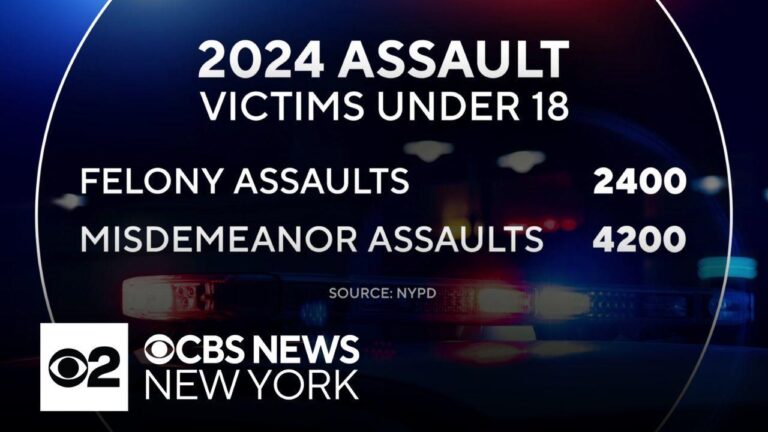New York City Crime Trends: A Mixed Picture of Progress and Challenges
New York City’s crime statistics present a multifaceted scenario in 2024. While the city has experienced an encouraging overall reduction in crime rates, a concerning rise in felony assaults signals ongoing public safety challenges. This paradox reflects the intricate dynamics at play, where improvements in some areas coexist with setbacks in others. Law enforcement and city officials are tasked with navigating these complexities to maintain and enhance community security.
Recent data highlights the following key trends:
- Overall Crime Rate: Declined by approximately 7% compared to the previous year
- Felony Assaults: Increased by 12%, marking a sustained upward trajectory over the last three quarters
- Shooting Incidents: Largely stable with slight variations
- Police Community Engagement: Expanded outreach and intervention initiatives
| Crime Category | Year-over-Year Change | Estimated Citywide Incidents |
|---|---|---|
| Robberies | -10% | 4,200 |
| Felony Assaults | +12% | 7,800 |
| Burglary | -5% | 3,500 |
| Shooting Incidents | +1% | 430 |
Root Causes Behind the Surge in Violent Assaults
Despite the encouraging drop in overall crime, the rise in felony assaults is attributed to a combination of socio-economic and systemic factors. Economic instability, including persistent unemployment and inflationary pressures, has exacerbated tensions in many communities. Additionally, gaps in mental health services and substance abuse treatment contribute to heightened risks of violent confrontations.
- Insufficient Community Resources: Cuts to youth programs and recreational facilities reduce constructive engagement opportunities, increasing susceptibility to gang recruitment.
- Policing Adjustments: Evolving law enforcement tactics and strained police-community relations have led to less proactive presence in certain neighborhoods.
- Illegal Firearm Circulation: The widespread availability of unlicensed weapons intensifies the severity and frequency of assaults.
| Contributing Factor | Effect on Violence |
|---|---|
| Economic Strain | Increased interpersonal conflicts |
| Reduced Youth Programs | Higher risk of gang involvement |
| Weapon Accessibility | Greater assault lethality |
| Policing Strategy Changes | Lower deterrence in vulnerable areas |
Moreover, the social fabric of many neighborhoods has been weakened in the wake of the COVID-19 pandemic, leading to diminished community cohesion and trust. This erosion of informal social controls often allows disputes to escalate unchecked.City leaders recognize these intertwined challenges and advocate for comprehensive solutions that integrate enforcement with social and economic support.
Joint Efforts Between Communities and Law Enforcement to Reduce Violence
In light of the rising felony assault rates, New York City has intensified partnerships between police departments and local communities. Emphasis is placed on strengthening neighborhood policing to foster mutual trust and cooperation. Programs targeting youth violence prevention include mentorship, conflict mediation training, and expanded mental health services tailored to at-risk populations.
Law enforcement agencies are increasingly leveraging data analytics to pinpoint crime hotspots and allocate resources efficiently. This approach combines technological tools with community feedback to enhance transparency and responsiveness. Key initiatives currently underway include:
- Dynamic crime mapping: Utilizing real-time data to guide patrols proactively.
- Community liaison officers: Serving as bridges between police and neighborhood groups.
- Specialized units: Dedicated task forces targeting repeat violent offenders.
- Public engagement forums: Facilitating dialog and collaborative problem-solving.
| Initiative | Description | Outcomes |
|---|---|---|
| Neighborhood Policing | Embedding officers within communities to build rapport | Enhanced trust and reduced crime reports |
| Youth Engagement Programs | Mentorship and educational outreach | Lower youth involvement in violent acts |
| Crime Data Analytics | GIS and predictive tools for crime trend analysis | Improved resource deployment |
Policy Strategies to Maintain Crime Reduction and Address Assaults
To preserve the downward trend in overall crime while tackling the rise in violent assaults, a comprehensive policy framework is essential. This framework should balance robust law enforcement with substantial investment in community progress. Strengthening partnerships between police and local organizations is vital for building trust and enhancing intelligence sharing.Focused interventions targeting high-risk areas and repeat offenders can disrupt cycles of violence effectively.
Long-term success also depends on preventive measures that address the root causes of violence. Expanding youth programs,improving access to mental health care,and providing job training and educational opportunities are critical components. Recommended policy actions include:
- Scaling up community policing to deepen local engagement and accountability
- Boosting funding for social services addressing trauma, addiction, and mental health
- Implementing data-informed patrol strategies to maximize impact
- Enhancing support systems for vulnerable youth and families
| Policy Area | Anticipated Benefit | Implementation Timeline |
|---|---|---|
| Community Policing Expansion | Reduced violent incidents through stronger community ties | 1-2 years |
| Youth Intervention Initiatives | Lower rates of recidivism and violence | 3-5 years |
| Mental Health Service Enhancement | Improved crisis response and fewer violent episodes | Immediate to 2 years |
| Data-Driven Policing | More efficient crime prevention and response | 6 months to 1 year |
Conclusion: Navigating Toward a Safer New York City
As New York City continues to evolve in its approach to public safety, the overall reduction in crime offers a hopeful outlook. Still, the persistent increase in felony assaults highlights the need for nuanced strategies that address both enforcement and the socio-economic factors fueling violence. By fostering collaboration between law enforcement, community stakeholders, and policymakers, the city can work toward sustainable solutions that protect all residents and strengthen neighborhood resilience.




